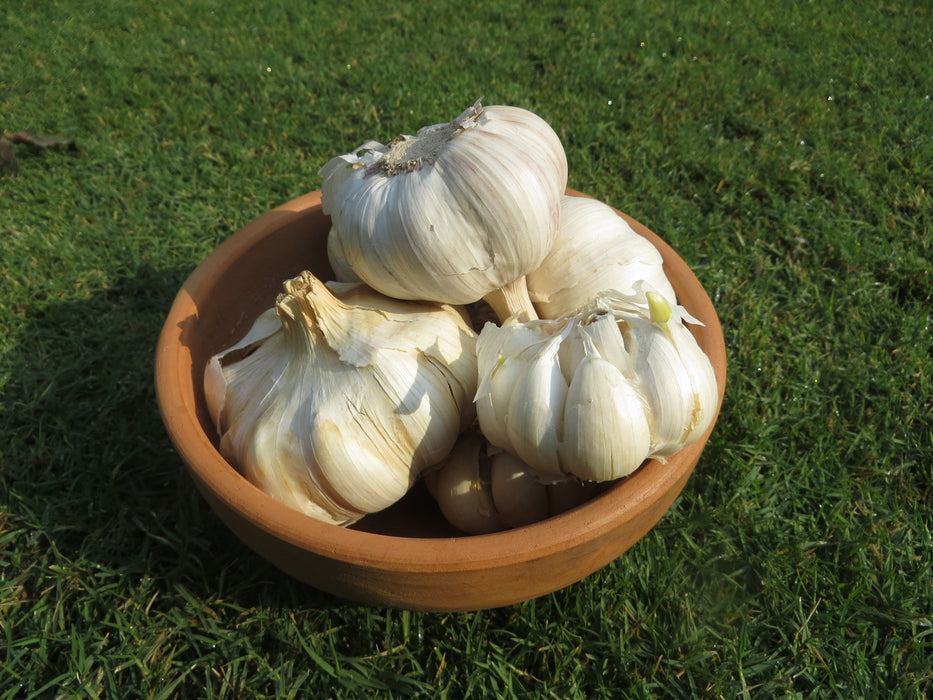Garlic has been used in cooking and medicine for thousands of years, but what about the environmental impact and sustainability of garlic farming? In this article, we explore how modern agriculture is affecting the environment when it comes to garlic production. Well, look at how practices such as crop rotation, pest control, soil management, and irrigation can help reduce waste while ensuring that garlic farmers can remain profitable.
Finally, we will discuss some potential solutions that could lead to more sustainable methods of growing garlic to protect our planet from further damage.
The Environmental Impact of Garlic Farming
Garlic farming has long been a part of the culinary landscape, providing a flavorful and versatile ingredient to many dishes around the world. But there are also significant environmental considerations that come with garlic farming.
As demand for this popular crop continues to rise, it is essential to be mindful of its impacts on the environment. From soil degradation through chemical fertilizers and pesticides to water contamination from runoff, garlic farming can have major ecological consequences if not managed properly.
The use of herbicides and fungicides in particular can threaten both human health and biodiversity near farmlands if used unwisely. In addition, intensive cultivation practices such as monocropping put additional strain on soils by depleting important nutrients needed for healthy plant growth while reducing diversity within ecosystems.
Fortunately, there are steps farmers can take toward more sustainable production methods that greatly reduce their impact on the environment while still yielding high-quality crops. Rotating crops every few years helps build up fertility in soils naturally without needing chemical inputs; using cover crops between harvests reduces erosion and keeps weeds at bay; choosing organic growing techniques eliminates synthetic chemicals from entering into food supplies or waterways; utilizing natural pest control like ladybugs instead of hazardous sprays can help protect beneficial insects that keep harmful pests under control; even simple measures like mulching help conserve moisture levels in soils which leads to healthier plants overall with less need for irrigation.
Ultimately, when it comes down to it environmentally-conscious garlic farming requires an integrated approach – one where growers continually strive toward better practices so they can harvest delicious yields without compromising our planet’s precious resources today or tomorrow
Sustainability in Garlic Production

Garlic production is a highly sustainable practice, as it requires minimal energy and resources to cultivate. Garlic farming can be done in many different climates and does not require large amounts of water or fertilizer.
Additionally, the crop is an excellent source of nutrition for people living in resource-poor areas. The garlic plants’ hardy nature also allows farmers to produce multiple harvests over a year without exhausting their soil’s fertility levels.
Organic garlic farming has become increasingly popular due to its environmental benefits as well as its healthful properties. Organic farmers use no synthetic fertilizers or pesticides, which helps preserve soil health and prevents harmful runoff into nearby waterways. Furthermore, studies have shown that organic garlic contains more beneficial nutrients than conventionally grown varieties.
However, sustainability practices are only effective if properly implemented by farmers on a local level; this includes minimizing tillage operations such as plowing and using cover crops like legumes when possible to fix nitrogen in the soil while suppressing weeds naturally rather than relying on herbicides or other chemical products. As more small-scale farms transition towards organic methods of growing food there will be positive effects on both human health outcomes and environmental protection around the world.
Strategies for Improving the Sustainability of Garlic Farming

As garlic farming has grown in popularity, so too have conversations about how to improve its environmental sustainability. From reducing water usage and pesticide use to increasing crop rotation practices, there are many strategies that farmers can employ to make their production more sustainable.
One way for farmers to reduce their impact on the environment is by investing in better soil management techniques. For example, fertilizers can be used judiciously to nourish the soil without over-fertilizing it and causing runoff into nearby waterways.
Additionally, composting organic matter such as vegetable waste or animal manure can help improve soil structure while also providing a natural source of fertilizer. Another way for garlic farmers to increase sustainability is by using integrated pest management (IPM) systems instead of relying solely on chemical pesticides and herbicides. IPM involves monitoring pests closely and using methods such as biological controls—utilizing beneficial insects like ladybugs or lacewings—and cultural control measures like releasing predatory mites before resorting to chemical solutions when necessary.
Finally, adopting a crop rotation system that includes other vegetables or grains can help keep soils healthy while allowing farmers access to more diverse markets with potentially higher profits than those generated from single crops alone. In addition, planting cover crops between main crops helps prevent erosion during rainstorms while providing additional habitat for beneficial wildlife species and helping build healthier soils overall.
Conclusion

Garlic farming has been a staple of agricultural production for centuries, yet its environmental impact and sustainability have only recently come into focus. As we move forward in our understanding of how to sustainably grow garlic, we must consider the potential benefits and drawbacks associated with this practice.
By carefully managing the soil fertility, crop rotation practices, water usage, and other elements involved in garlic farming, we can ensure that this valuable crop continues to be produced without compromising our environment or future generations’ ability to enjoy its many benefits. Garlic farming provides an excellent opportunity for us all to contribute towards a more sustainable food system – one that will help us create a better planet for everyone.